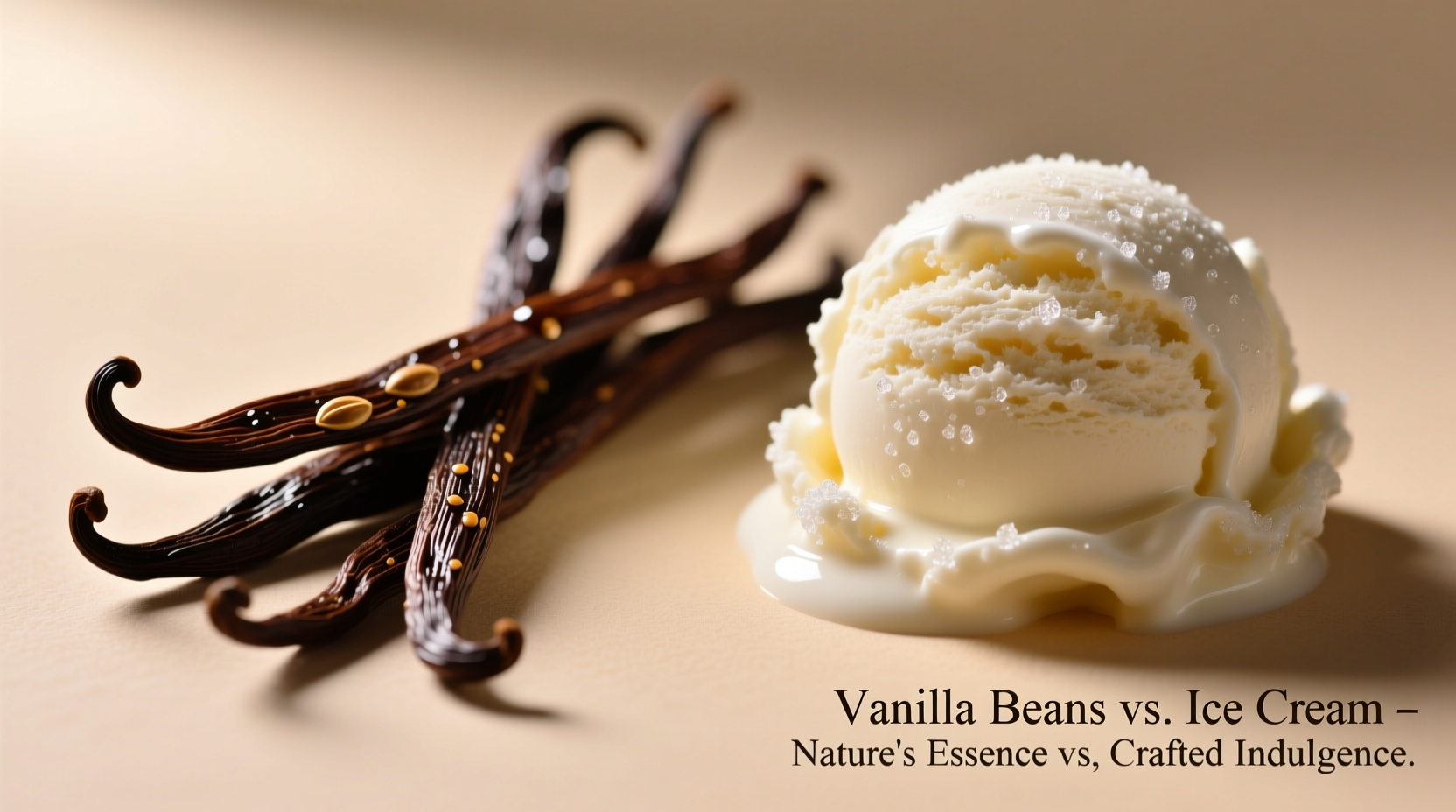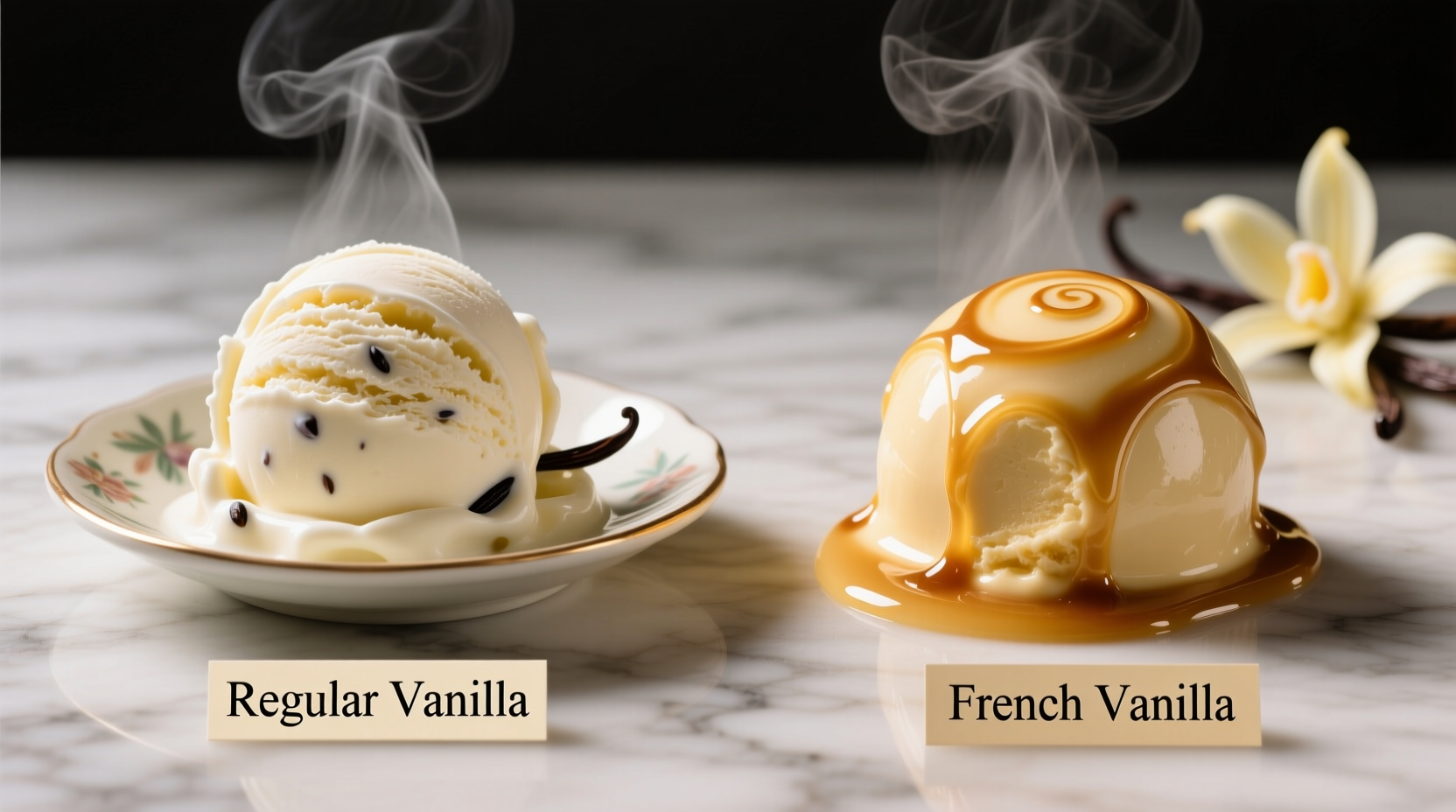Understanding the Real Flavor Difference
When comparing French vanilla to regular vanilla, the distinction isn't about different vanilla bean varieties but rather the preparation method and additional ingredients. This common misconception leads many consumers to believe French vanilla comes from a special "French" type of vanilla bean, which doesn't exist in botanical terms.
Flavor Profile Comparison: Breaking Down the Differences
| Characteristic | French Vanilla | Regular Vanilla |
|---|---|---|
| Primary Flavor Notes | Creamy, custard-like, subtle caramel, baked egg | Pure vanilla, floral, sweet, sometimes woody |
| Texture Perception | Richer, more substantial mouthfeel | Lighter, more straightforward flavor delivery |
| Base Ingredients | Vanilla beans + egg yolks + cream | Vanilla beans or extract only |
| Common Applications | Ice cream, custards, French-style desserts | Baking, flavoring, general-purpose use |
| Color | Pale yellow (from egg yolks) | Clear to light brown |
Why They Taste Different: The Culinary Explanation
The difference stems from traditional French ice cream making techniques. Authentic French vanilla ice cream uses a custard base (crème anglaise) made with egg yolks, cream, and real vanilla beans. This preparation creates a more complex flavor profile where the egg yolks contribute richness and subtle savory notes that complement the vanilla.
Regular vanilla products typically contain only vanilla extract or beans without the additional dairy and egg components. According to the U.S. Food and Drug Administration's standards for vanilla flavorings, pure vanilla extract must contain vanilla beans, alcohol, and water, but no additional flavoring agents.
Common Misconceptions About French Vanilla
Many consumers mistakenly believe French vanilla refers to a specific vanilla bean variety grown in France. In reality, France doesn't grow vanilla commercially—the primary vanilla growing regions are Madagascar, Mexico, and Tahiti. The term "French" refers to the preparation method, not the origin of the beans.
Food historians note that the French vanilla designation became popular in America during the 1980s ice cream wars when premium brands differentiated their custard-based products from standard vanilla offerings. This marketing term has persisted despite causing ongoing consumer confusion.
Practical Applications: When to Use Each Type
Understanding these differences helps you make better choices for your culinary projects:
Choose French Vanilla When:
- You want a richer, more complex flavor in ice cream or custards
- Creating desserts where egg yolks complement other ingredients (crème brûlée, vanilla pots de crème)
- You desire that distinctive pale yellow color in finished products
Choose Regular Vanilla When:
- Following baking recipes that specify pure vanilla extract
- Creating lighter desserts where egg flavor might interfere
- You need a more neutral vanilla flavor that won't compete with other ingredients

How to Identify Authentic Products
When shopping, check ingredient labels carefully. True French vanilla ice cream will list egg yolks in the ingredients, while regular vanilla ice cream typically won't. For vanilla extract products, "French vanilla" is almost always a flavoring addition rather than a reflection of preparation method.
Culinary professionals recommend looking for products that specify the vanilla bean source (Madagascar, Tahitian, Mexican) rather than relying on "French" labeling, which has no standardized meaning in extract products.
Expert Insight: The Flavor Chemistry Perspective
The richer profile of French vanilla comes from the Maillard reaction that occurs when egg yolks are gently heated with sugar and cream. This creates new flavor compounds that complement rather than mask the vanilla's natural vanillin and hundreds of other aromatic compounds.
According to research published in the Journal of Agricultural and Food Chemistry, vanilla contains over 200 different flavor compounds, with vanillin being just the most prominent. The custard base in French preparations enhances certain secondary compounds that remain subtle in regular vanilla applications.











 浙公网安备
33010002000092号
浙公网安备
33010002000092号 浙B2-20120091-4
浙B2-20120091-4